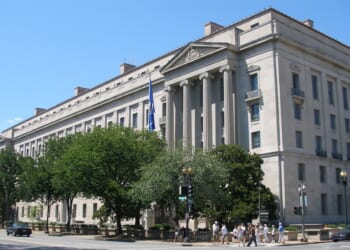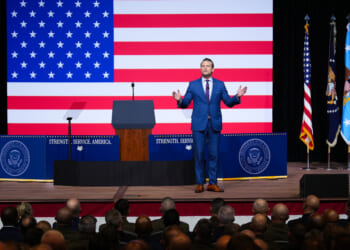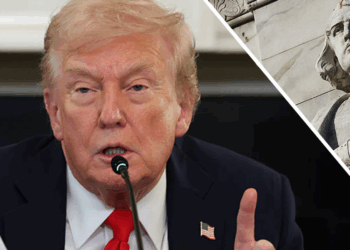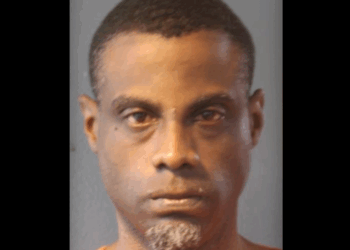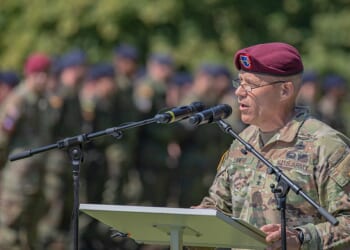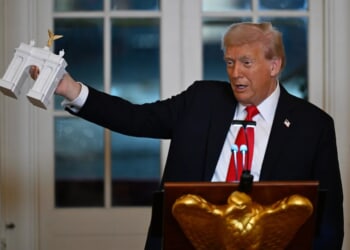One of the most popular claims by anti-Second Amendment groups is that firearms lead to more crime. Indeed, anti-gun advocates point to dubious studies that purportedly debunk the research by John R. Lott, an academic, economist, and head of the Crime Prevention Research Center (CPRC). Lott’s work definitively shows that higher concentrations of legal gun ownership result in less crime.
By contrast, leftist research often makes conflation and category errors, such as failing to make a clear distinction between suicide using a firearm and a crime committed with a firearm. Suicide deaths by firearm are far more prevalent than crimes committed with firearms.
Furthermore, they claim that instances of firearms being used to prevent violent crime are much less frequent than instances of crimes happening because of guns. To make this argument, the gun-control lobby appeals to data from the FBI.
It turns out that the data the FBI has been providing is inaccurate. That’s because the FBI has been undercounting the number of instances in which armed civilians have thwarted active shooters.
Lott points out that the FBI has known about this issue and acknowledged its error three years ago, but has taken no action to rectify it. He notes, “In the years since, the problem has only gotten worse. Since RCI’s 2022 article, the FBI has acknowledged just three additional incidents of armed good Samaritans stopping active shooters from 2022 to 2024, and none in the last two years. In contrast, the Crime Prevention Research Center (CPRC), which I head, has documented 78 such cases over that same period — a 26-fold difference.”
Why has this been happening? Lott sees the issue as two-fold: politics and the refusal by many local jurisdictions to report accurate crime data to the FBI. A recent example of this failure to report accurate crime data is at play in the FBI’s own backyard, as it were. The Washington, DC, police are currently under a Justice Department investigation, accused of falsifying crime reports to create the “false illusion of safety” in the city.
Understandably, the FBI would deliver erroneous data if it were receiving bad numbers. But the fact that the FBI, after receiving corrective data, has yet to fix its records on shootings suggests that there is politics at play.
Lott notes an issue with the FBI’s definition of active shooter incidents: “In 2022, the FBI reported that only 11 of the 252 active shooter incidents it identified for the period 2014-2021, or 4.4%, were stopped by an armed citizen. However, an analysis by my organization identified a total of 281 active shooter incidents during that same period and found that 41 of them — or 14.6% — were stopped by an armed citizen.”
“The FBI report compiled for the Biden administration for 2023 and 2024 contains worse errors,” Lott writes. “It asserts that armed civilians stopped none of the 72 active shooting cases it identified. The CPRC, by contrast, identified 121 active shooter cases — 45 of which were ultimately halted by armed civilians. Those incidents included eight cases that likely would have resulted in mass public shootings with four or more people murdered.”
Again, why is the FBI’s data so inaccurate? Another factor is that the FBI isn’t actually compiling the data; instead, the bureau hires researchers at Texas State University to do so. These researchers, in turn, use Google to scour the nation for news stories regarding shooting incidents. This reliance on media reporting itself is problematic, as facts can often be inaccurate — if the story is covered. Furthermore, how the media frames an incident will also affect how it is classified.
“Between 2014 and 2024, FBI reports determined that armed citizens stopped 14 of 374 active shooter incidents its researchers identified — or 3.7% — with zero defensive gun use cases occurring in the two most recent years,” Lott reports. “Using the FBI’s definitions, CPRC identified 561 active shooter incidents, with armed citizens stopping 202 of them — or 36%. In addition, CPRC found 31 other cases where civilians intervened before suspects fired their weapons — incidents CPRC excluded because they did not fit the FBI criteria, though they likely prevented shootings as well.”
Over that same decade, the FBI missed 42 instances in which an armed civilian likely thwarted a mass public shooting.
Lott noted two examples of potential mass casualty cases that were quickly ended by a civilian with a firearm. The FBI missed these incidents in its data and has yet to make the necessary corrections. When John Stossel, in 2024, asked the FBI about how complete its data is, the bureau responded, “[Our data is] not intended to explore all active shooting incidents but rather to provide a baseline understanding.” In other words, we’re not interested in data that doesn’t uphold the gun-control lobby’s narrative on “gun violence.”
The correct data blows up the gun-control lobby’s false claim that more guns equal more crime. Some 92% of mass public shootings happen in gun-free zones. In fact, one of the most recent instances of this factor at play was seen in the Annunciation Catholic School attack in Minneapolis in August. The perpetrator explicitly noted in his manifesto, “I recently heard a rumor that James Holmes, the Aurora theater shooter, may have chosen venues that were ‘gun-free zones.’ I would probably aim the same way. … Holmes wanted to make sure his victims would be unarmed. That’s why I and many others like schools so much.”
Marking a building or facility as a “gun-free zone” is nearly the equivalent of putting a target on it. Is it not telling that police stations are rarely the target of mass shootings? Instead, criminals will intentionally target those soft-target locations where they have less fear of being confronted by a good guy with a gun.
Following CPRC’s report, University of Georgia professor David Mustard observed, “The federal government must improve its records related to self-defensive uses of firearms — especially in active shootings. Because academics, media, and policymakers depend on their data, it is essential that the FBI collect and compile the data consistently and accurately.”
Precisely.


